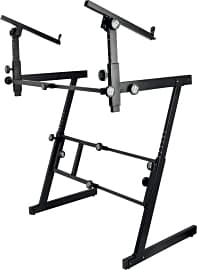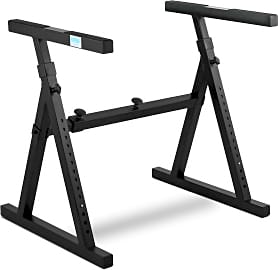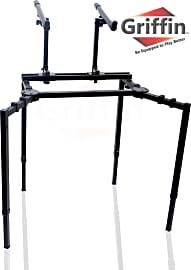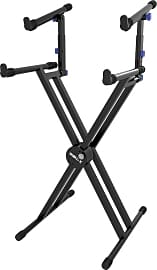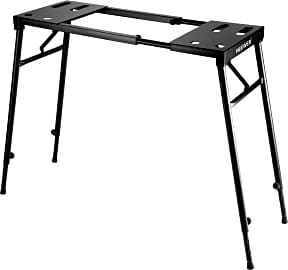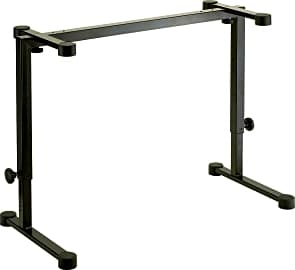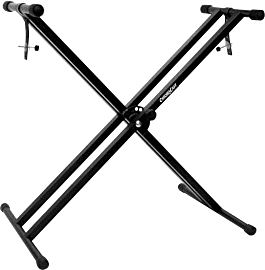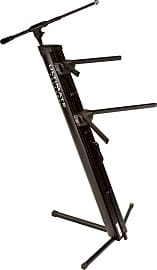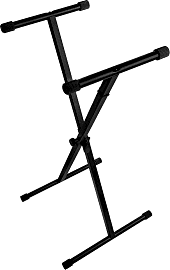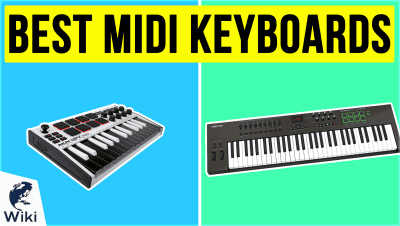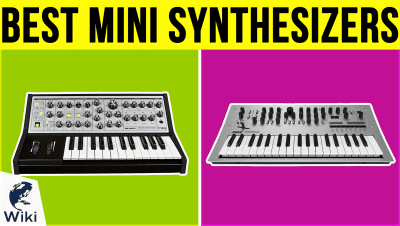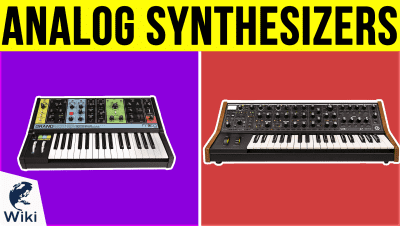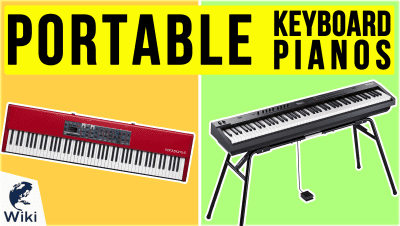The 10 Best Keyboard Stands

This wiki has been updated 42 times since it was first published in January of 2016. Whether you're a professional musician, a music student, or you just tickle the ivories for fun, one of these keyboard stands will provide you with a stable platform on which to place your instrument. Designed for use specifically with electric models, these come in options good for use at home, in studios, and onstage, with some even able to support multiple instruments. When users buy our independently chosen editorial choices, we may earn commissions to help fund the Wiki.
Editor's Notes
February 20, 2020:
Electric pianos, MIDI keyboards, and digital as well as analog synthesizers are more popular today than ever before, and it's important to have sturdy equipment holding them up. If you have just a single keyboard to work with and it's not terribly heavy, you might be able to get by with the OnStage KS7190, though if you want a little more stability you might consider the Chromacast KStand Pro Series, though neither is suitable for very heavy instruments. For more serious keyboards and players, the RockJam Xfinity is likely the way to go -- if you don't want to spend much and if you're okay with the traditional scissor design.
Of course, there are quite a few designs that aren't in that same conventional style. The Knox Gear KS03 is a Z-style model that many users find far more stable than X-style models. If you need space for two instruments, the OnStage KS7365EJ Pro offers a similar Z-type construction with a removable upper tier. Similarly, but not exactly the same, the Griffin AP3299 and Quik Lok QL742 can accommodate two keyboards -- the Griffin offers considerably more real estate, and the Quik Lok is a bit easier to set up and tear down.
The Neewer Collapsible is much like a standard folding table, and the K&M Omega provides a somewhat austere and especially sturdy way to play. If you value all three of looks, performance, and stability at the same high level, though, you'll probably like the Ultimate Support Apex AX48 Pro. It costs about $200, far more than most others, but it wouldn't be out of place at a sold-out rock'n'roll show.
Special Honors
Yamaha Keyboard Stands They make some of the most respected electric pianos in the industry, and if you own one of them you'll probably want to look into getting a matching stand. Of course, they're not one-size-fits-all, they're relatively expensive, and most aren't very portable, but if you demand the most stability and support for your high-end keyboard, they're worth a look. usa.yamaha.com
Choosing A Great Keyboard Stand
If you need a keyboard stand this is both portable and attractive, then you have something of a larger challenge ahead of you.
There are two major considerations to be made when you are trying to find the right keyboard stand for yourself. The first thing you must take into account is whether or not you will be playing your keyboard only at home, or whether you need a stand that is at least relatively portable. If you're going to move your stand from location to location, then several options are removed from contention, as they are too large, quite heavy, and do not fold or collapse for transport.
The second issue is whether or not you are concerned about the aesthetics of your keyboard stand. If your stand is to be a permanent fixture, this issue is of much greater concern but is also easier to remedy, as you can always choose a larger stand that is akin to a piece of furniture. If you need a keyboard stand this is both portable and attractive, then you have something of a larger challenge ahead of you.
There are a few options out there beyond the standard "X-shaped" portable keyboard which look good enough for use on stage during a gig or in the orchestral section of a theater or church, but you should be ready to spend well over a hundred dollars for most of them. With this added price tag usually comes excellent stability and easy adjustment features, however, which are useful features especially for a keyboard stand that might be used by several different people.
If you are unconcerned about how your keyboard stand looks, then you will have an easy time of selecting a good portable keyboard stand. In fact, you might as well let the decision come down to budget in that case. There are keyboard stands that cost only around twenty dollars and are suitable for occasional use (though probably should not be trusted to hold a heavy keyboard indefinitely), while other options can be had for around fifty dollars that should last for years and years if they are cared for.
Other Uses For Your Keyboard Stand
Keep in mind that just because a keyboard stand was designed to hold a keyboard, it can play a variety of other roles if needed. These sturdy devices can hold plenty of weight, so don't be afraid to make the most of them when you're not using one to help you play music.
Keyboard stands can also work perfectly with other instruments, such as xylophones or to support turn tables or an electronic drum kit.
A keyboard stand can be an excellent temporary serving table when a plank is laid across its top and then covered with a tablecloth. Chances are that the bottles of wine or pitchers of iced tea or water you place atop your keyboard stand won't equal the weight of a heavy keyboard, so go ahead and use one as the bar for a gathering (or to present the condiments at a barbecue or the deserts at a party).
A keyboard stand can also help serve as a stand in for a saw horse, holding up lumber or piping to be cut or providing a stable spot to stack boxes or building materials you don't want to leave on the ground. (Just don't ever try to support your own weight with a keyboard stand; these devices have their limits.)
Keyboard stands can also work perfectly with other instruments, such as xylophones or to support turn tables or an electronic drum kit.
A Brief History Of The Keyboard
One cannot fairly mention the keyboard without first taking a moment to talk about the history of the piano. Predicated on earlier instruments but ultimately unique, the acoustic piano as we know it today was invented in the very late 17th Century or in the first years of of the 18th Century. The invention of the piano is credited to an Italian musician and instrument maker named Bartolomeo Cristofori who worked in the employ of the famed Medici family of Northern Italy. The piano was a great leap forward for music due to the quality of the sound it could produce, specifically in terms of volume. While earlier harpsichords and clavichords could produce dulcet notes, they could not fill larger spaces with music, nor could they be heard for much distance outside. The piano produced bold, robust music that could be used in a concert hall, a chamber, or in the open air alike.
One cannot fairly mention the keyboard without first taking a moment to talk about the history of the piano.
Pianos would soon be the centerpiece of many orchestras and see symphonies and sonatas crafted around their sound. The piano would go on to be popular in all manner of musical genres, from blues to jazz to rock and roll. For years, a piano player had two basic choices when it came to selecting a piano: the lovely but massive grand piano and the more compact upright piano. That would all change in the 20th Century.
Electric pianos of the late 1920s eschewed acoustic chambers for metal strings and magnetic "pickups" connected to speakers. In the later 20th Century, even these strings were supplanted by non acoustic keyboards that created synthesized notes. Their sound is produced via digital replication rather than through amplified resonance.
Not only can a great electric keyboard sound for all intents and purposes just like a grand piano, but it can also fit the budget of most musicians, not to mention fitting the space they have available in their home or practice area. A keyboard that can slide under a bed and be brought along in a car simply makes more sense than an instrument that fills an entire room, and does much to democratize piano music. Once you have a great keyboard, all you need are some lessons, some sheet music, and a reliable keyboard stand. The electronic keyboard puts piano music in the reach of all dedicated musicians.


